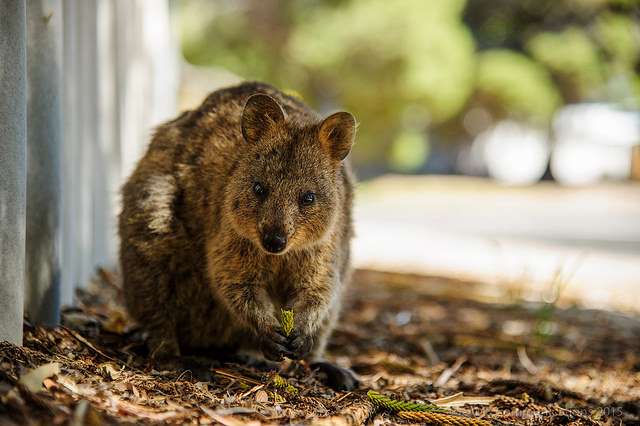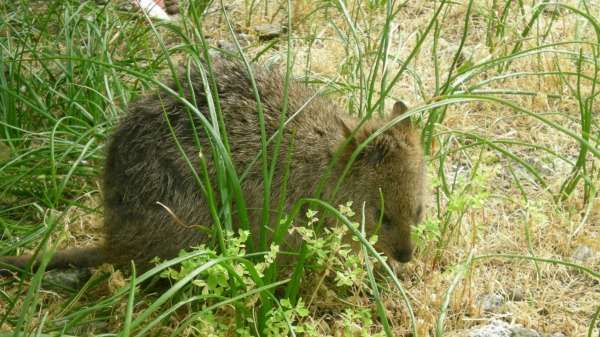Mapping the future of Rottnest's furry friends

We all know Rottnest Island's iconic quokkas (Setonix brachyurus) love eating treats from tourists and poking around inside public buildings but local researchers have identified plant species on the island that the quokkas need for food and shelter.
The Murdoch University study identified eight plant species used for food and four used for shelter by the quokkas and mapped their extent and distribution using hyperspectral remote sensing data.
They collected fresh faecal samples from 210 quadrats across the islands' twelve native vegetation types over a two week period in 2011 to conduct dietary analysis.
The study found a clear preference for Guichenotia ledifolia, a non-significant food source for Rottnest Island quokkas 50 years ago, which suggests compositional changes in island vegetation over time may have caused this species to be more dominant in the landscape.
Researcher Patricia Fleming says a history of grazing, fire and land clearing has altered Rottnest's vegetation structure and composition and therefore the quokkas' vegetation use.
"The diet of these animals is likely to have changed over the last 50 years and probably has shifted from that of over 200 years ago," Ms Fleming says.
"The vegetation on the island has changed markedly over that time, largely due to anthropogenic influences."
Quokkas were found to have a clear preference for Melaleuca lanceolata and Acacia rostellifera for shelter, highlighting the importance of dense, protective vegetation.

They used remotely sensed, hyperspectral airborne imagery to map the principal food and shelter species in order to determine the locations where the preferred species are evident and where the principal species overlap.
Ms Fleming says managing these key habitat locations is essential as the Rottnest Island population suffers severe seasonal crashes due to a lack of permanent water bodies and intense browsing pressure from other quokkas.
"There are definitely times of the year for example, at the end of summer when the first cold nights hit those that are in worst condition, that animals are likely to be physiologically stressed," Ms Fleming says.
"The forest [on the mainland] has more resources and the animals can probably access a much greater area to obtain their requirements."
"The Rottnest Island population is resource limited."
"It is likely that loss of a key plant species will alter the carrying capacity of the island," she says.
More information: "Spatial analysis of limiting resources on an island: diet and shelter use reveal sites of conservation importance for the Rottnest Island quokka." Wildlife Research, 41(6), 510. DOI: 10.1071/wr14083
Provided by Science Network WA



















